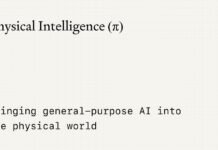Did you know generative AI could add up to $4 trillion to the global economy, says McKinsey? This new tech can make text, images, music, and code. It’s different from old AI that just analyzes data and does specific tasks12. Traditional AI, or Narrow AI, is great at tasks like chatbots and recommendations. But generative AI is changing how we make content13.
Knowing the difference between these AI types is key. It helps us use their strengths in different fields.
This article will explore the gap between generative AI and traditional AI. We’ll look at what they do, how they’re trained, and their new uses.
Key Takeaways
- Generative AI creates new content, while traditional AI analyzes existing data.
- Generative AI can significantly boost productivity across various sectors.
- Examples of generative AI tools include GPT-4 and AI-driven music production.
- Both types of AI have distinct roles and benefits in modern applications.
- Understanding these differences enhances strategic decision-making in businesses.
Understanding Artificial Intelligence
Artificial intelligence, or AI, is about systems that act like humans to do tasks. It’s a broad term for technologies that make decisions and solve problems on their own. Key ideas like machine learning and deep learning have led to big changes in AI over the years4.
Definition and Core Concepts
The core concepts of AI help robots and algorithms get better over time. Machine Learning lets them learn from past data. Deep learning, inspired by the brain, helps them handle complex data better5. Neural networks improve accuracy by using feedback, making AI more useful in fields like healthcare and finance.
Categories of AI: Narrow vs. General
There are two main types of AI: Narrow AI and General AI. Narrow AI does specific tasks, like Netflix’s recommendations, with great accuracy6. General AI aims to be as smart as humans, but it’s still a goal for the future.
Applications of Traditional AI in Various Industries
Narrow AI is used in many fields to make things more efficient. In healthcare, AI helps doctors make better decisions with patient data. In finance, it spots fraud, making transactions safer4. Chatbots and virtual assistants, like Siri and Alexa, show how AI improves customer service6.
What is Generative AI?

Generative AI is a new part of artificial intelligence that makes original content. This can be text, images, music, or videos. It learns from big datasets and makes things that look like what it’s seen before.
Definition and Functionality
Generative AI uses complex neural networks to learn from data. It doesn’t need to be programmed. Instead, it figures things out by seeing examples.
It uses a method called reinforcement learning with human feedback. This helps it get better at what people like or don’t like. The models can handle lots of data thanks to transformers, which make data processing fast7.
For example, ChatGPT is trained on huge amounts of text. It’s trained on data that’s in petabytes8.
Examples of Generative AI Tools
There are many generative AI tools out there. OpenAI’s GPT-3 can write text quickly, but it might not always get things right, like counting8. DALL-E 2 shows how it can make amazing images from text, showing its range8.
As more businesses use generative AI, it’s clear it can make things better. It can help with marketing and healthcare, making things more efficient and creative8.
What is generative AI vs artificial intelligence?
Artificial intelligence (AI) covers a wide range of technologies. There’s a clear difference between traditional AI and generative AI. These differences between AI and generative AI show how they have unique roles, especially in what they can do and how they learn.
Key Differences in Functionality
Traditional AI mainly looks at and understands existing data to do specific jobs. On the other hand, generative AI creates new content by finding patterns in its training data. Generative AI is great for making music, designs, and marketing stuff. Traditional AI, however, is better at tasks in finance, healthcare, and making things9.
Also, traditional AI uses less computer power and works with smaller data sets. Generative AI needs lots of computer power and big data sets to work well9.
Training Processes and Data Usage
The training processes of AI are quite different between these two types. Traditional AI uses supervised and unsupervised learning. This means it can learn from labeled data or data without labels.
Generative AI, however, uses new methods like generative adversarial networks (GANs). A generator makes content, and a discriminator checks if it’s good10. This back-and-forth training helps generative AI make more realistic and varied content. It takes a lot of time and computer power to do this9.
Use Cases for Traditional AI
Traditional AI is key in many industries, making things work better and adding value. It’s used in many ways, like in healthcare and finance. In healthcare, AI helps doctors by looking at patient data and spotting diseases early. In finance, AI helps with trading by analyzing the market and making trades when it’s best.
Industry-Specific Applications
In customer service, AI chatbots help fast and make people happy by answering questions right away. Retail uses AI to understand what customers want, helping with marketing and keeping the right stock. About 62% of small businesses plan to use AI, and it really helps them work better11. AI is also good for the wallet, helping businesses grow and work more efficiently12.
Benefits for Businesses and Organizations
AI does more than save money; it also gives better insights and makes things more personal. It frees up people to do more creative work, like coming up with new ideas. As AI stays important, businesses keep getting better at using it, staying ahead in a changing world13. By using both old and new AI, companies can be more flexible and quick to respond.
FAQ
What is the difference between generative AI and traditional artificial intelligence?
How do generative models work?
What are some core concepts of artificial intelligence?
What distinguishes Narrow AI from General AI?
What are practical applications of traditional AI?
Can you provide examples of generative AI tools?
What training processes are used for generative AI?
What are the business benefits of implementing traditional AI?
How does understanding both generative and traditional AI unlock potential benefits?
Source Links
- The Difference Between Generative AI And Traditional AI: An Easy Explanation For Anyone
- Generative AI vs. Traditional AI: What’s Better?
- AI vs Generative AI: What’s the Difference? – MyCase
- What is the difference between AI and Gen AI? | Miquido Blog
- LibGuides: Generative Artificial Intelligence: Defining Generative AI
- Generative AI vs. Traditional AI: Understand Key Differences
- How generative AI is different from traditional AI
- What is generative AI?
- Generative AI vs. AI: Advantages, Limitations, Ethical Considerations
- AI vs. Generative AI: Exploring the Artificial Intelligence Landscape
- Traditional AI vs. Generative AI: A Breakdown
- Traditional AI Vs Generative AI: Breaking Down The Basics
- Generative AI vs. Traditional AI: A Simple Breakdown







